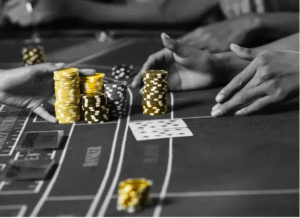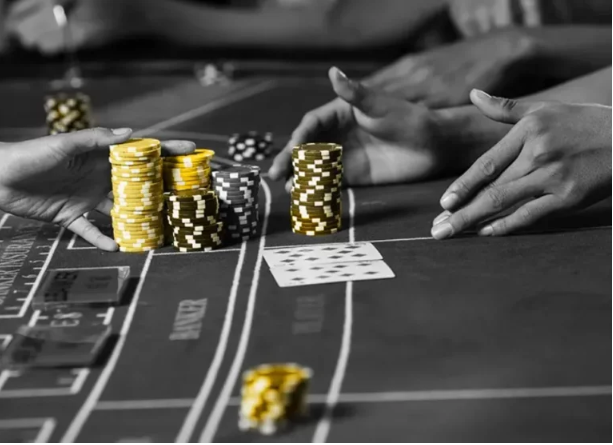Math Under Baccarat Streak Probability: How Could Casual Players Enhance Their Decision-Making
Math Under Baccarat Streak Probability How Could Casual Players Enhance Their Decision-Making .Although most players cannot find enough excitement and fun from playing online gambling games. Indeed, the hobby is there to pass the time and provide a somewhat varied and exciting kind of pleasure. Still, that only one side of it. Most players also wish to raise their chances and win as much as they can since you risk money to accomplish so in the first place and can earn money in the process.
While winning and enhancing your chances is a whole other level of playing casino games, playing for fun is great and lovely. This applies to all of them, particularly in card games like baccarat where luck rules most yet there are strategies to increase your odds of winning. Keep reading to discover the arithmetic behind baccarat streak likelihood and how you can grow better at this famous game if you enjoy it and wish to enhance your gameplay and decision-making.

Math Under Baccarat Streak The Mathematics of Baccarat
Although baccarat is praised for its simplicity and elegance, behind the surface is a game driven mostly by probability and mathematics. One topic that casual players find quite interesting is the concept of streaks. They show successive successes either for the banker or the player. While many players follow or wager against these streaks, few really know the arithmetic driving their probability and apply them correctly. We dissect the arithmetic behind this in the next paragraphs and show how players could apply this information to improve their strategy.
Math Under Baccarat Streak Every hand in baccarat has one of three results: a player wins, a banker wins, or a tie. Given tie bets have a substantial house edge, most bets are put on either the player’s or banker’s hands. While the player wins approximately 44.62% and ties happen about 9.52% of the time, the banker has a little statistical advantage and wins about 45.86% of non-tie hands. This is crucial to understand as, like the banker winning five times in a succession, a streak is a series of the same results. Many times, casuals believe in the hot hand—that the gambler’s fallacy, or that the run must stop shortly. Both of these sides, though, have to know the real odds.
Math Under Baccarat Streak See also Fred Durst Net Worth
By multiplying the individual outcome probabilities, we can determine the likelihood of a sequence of banker or player wins in a row whether we overlook ties or just evaluate hands that do not produce ties. For five consecutive banker wins is 2.02%; the chance of three consecutive banker wins is 9.65%. Though both are really low, it makes logic and pays to know them. Longer streaks are obviously much less likely. Still, the statistical ramifications ensure that even rare streaks will show up anywhere in the framework of hundreds of hands in a session. They are almost certain to occur.
Usually having six to eight decks, a baccarat shoe can produce between seventy and eighty hands. Simulations have shown that players in 80-hand shoes could expect many 3-win streaks for the banker as well as the player. Besides, there are a few 4- or 5-win streaks and sporadic a 6+ win streak. These streaks, however, come at random and cannot be predicted or used to win more or wager more precisely. There is nothing guiding the continuous or stopping of expeditions.
The largest error is thinking there is a pattern or that a long run is due. Each hand is, realistically, independent; the result has no bearing on the next. Though they are always arbitrary, short-term variations and streaks are natural. Can you therefore make wiser selections using streak probability? Sure and no. A streak does not allow you to forecast the next result and help you to regularly defeat the house. Still, you might make advantage of a decent platform like Bitcasino.io. Most of the time you can control your expectations and choose to bet mostly on the banker. Learn bankroll control instead than running after losses. This will help you to improve your game by choosing battles and tactics where it makes sense.
FAQs Regarding Baccarat
Describe Baccarat and explain how one plays it.
Played two hands, the Player and the Banker, baccarat is a comparative card game. Every round is termed a “coup” with three possible results. The Player wins; the Banker wins; or there is a Tie. The hand nearest to a total of nine wins.
Is baccarat a luck or skill game?
Although baccarat is mostly a game of luck, there are several strategies to raise your odds. Although players choose which hand to gamble on, the real gameplay uses set guidelines devoid of any decision-making throughout the transaction.
Why does the banker make a commission?
Having won roughly 45.8% of the time, the banker’s bet has a little statistical advantage. Usually taking a 5% commission on banker wins, casinos level the playing field to counter this.
In Baccarat, what is the optimal line of action?
Given its smaller house edge of roughly 1.06%, mathematically betting on the Banker is the best choice even after the commission the casinos typically charge. Still objectively the finest is it.
In Baccarat, what is a naturally occurring win?
When a hand’s initial two cards sum 8 or 9, a natural results. The natural hand wins immediately when either the banker or the player draws natural, no further cards. That is, except from both having naturals, in which case the highest wins.
Can you count cards in Baccarat as in Blackjack?
Although theoretically feasible, card counting is far less successful in Baccarat than in other games as Blackjack or poker. This is so because of the fixed drawing rules of the game and the little influence on expected value.
These three well-known variations of the game have minor rule and gameplay changes. Mostly seen in casinos, Punto Banco is the most often used point system based just on chance. Chemin de Fer lets players alternately be the banker. Though the banker stays the same for numerous rounds, Baccarat Banque is like Chemin de Fer. Each is enjoyable in its own right and gives more choices based on the player makeup.
In Baccarat, what does a “Tie” represent and should I stake on it?
A “tie” indicates that the hands of the banker and the player have equal worth. Although the payout is appealing at usually 8:1 or 9:1, it is generally not advised as its house edge is about 14.4%.
Exists a Baccarat winning plan?
Though money management, avoiding the Tie bet, and regularly betting on the Banker will assist enhance your odds; no method can overcome the house edge over time. And for luck-based games, losing less while raising your odds even by a small amount is a decent enough approach.
